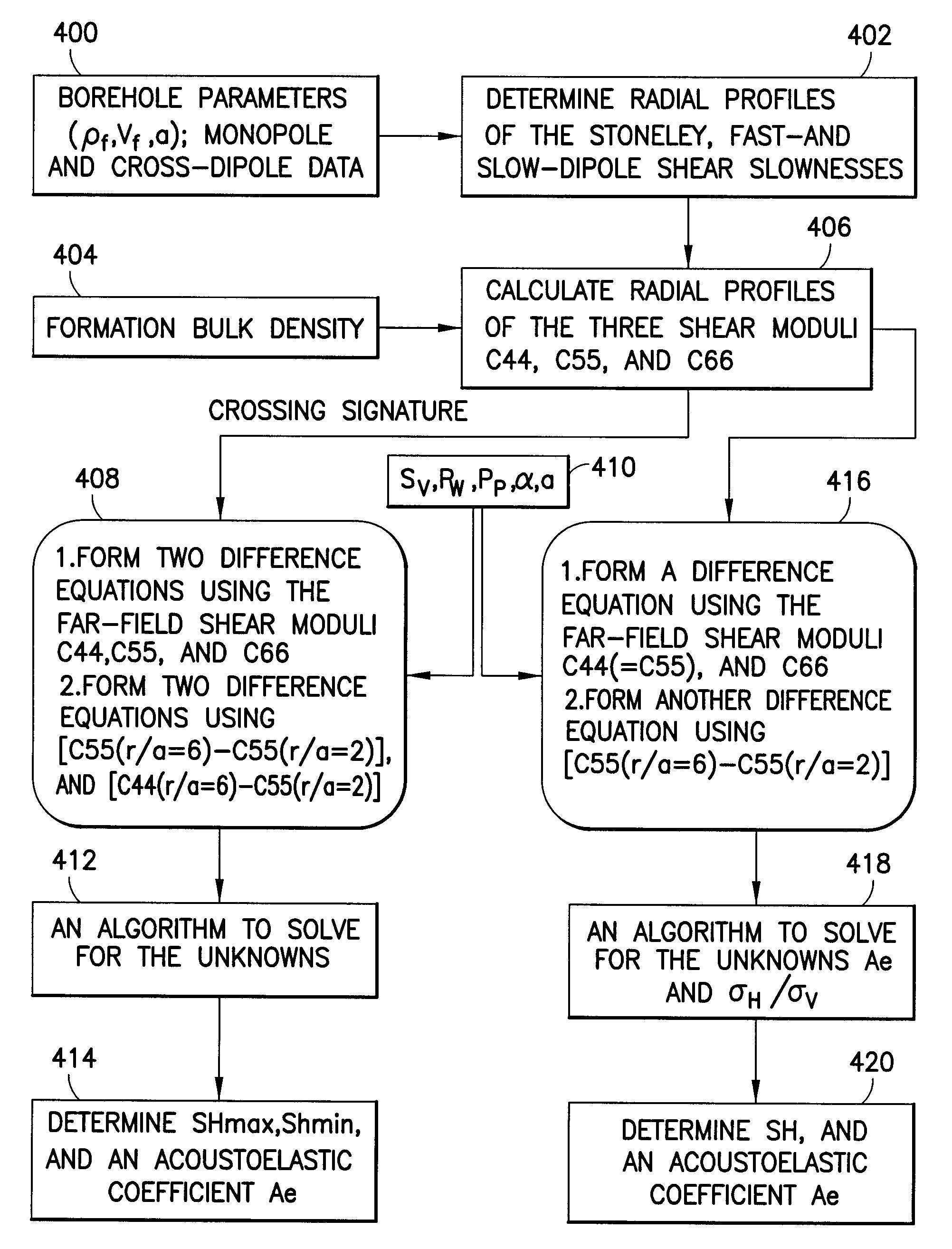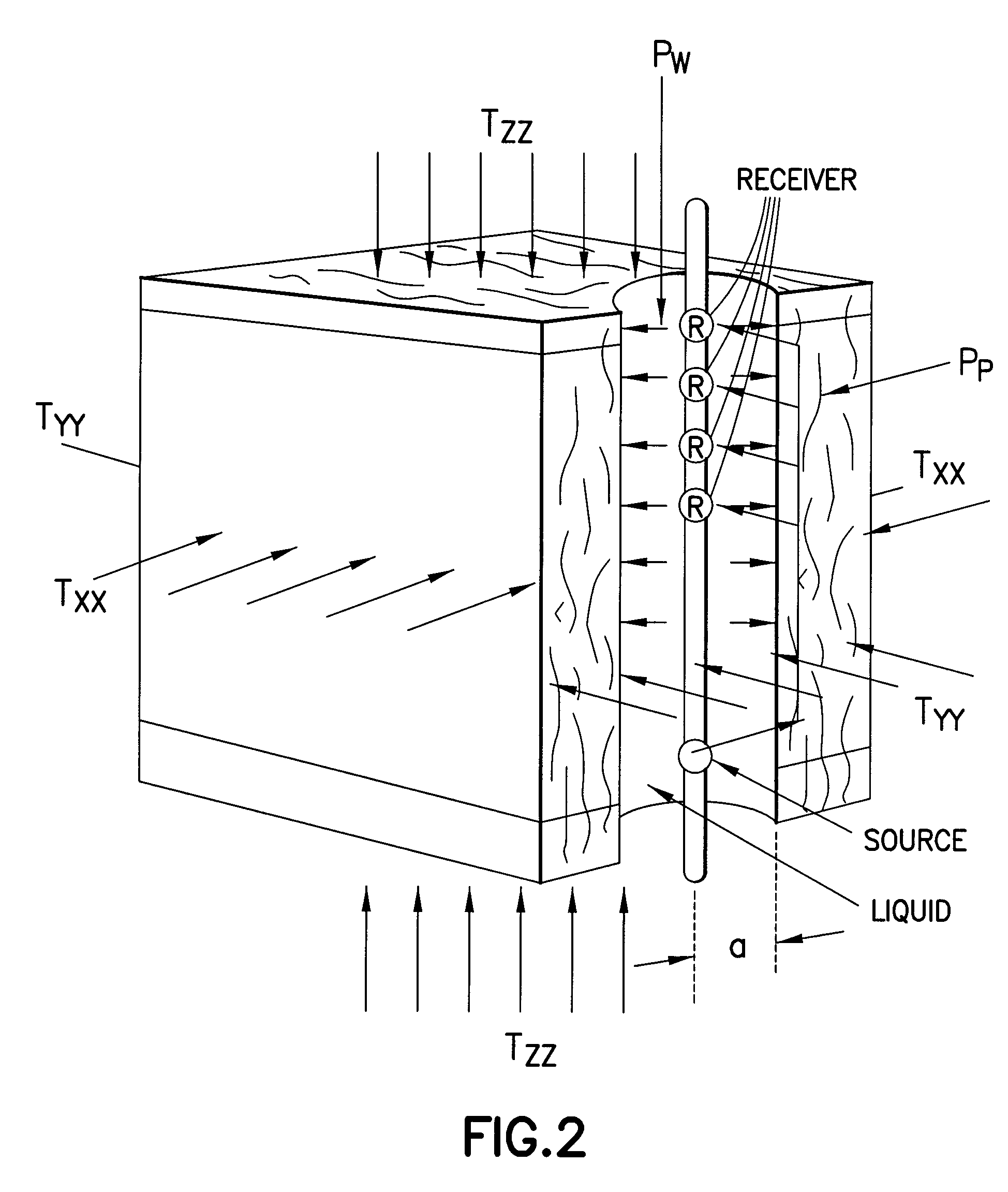Estimating formation stresses using radial profiles of three shear moduli
a technology of radial profiles and shear moduli, applied in seismology for waterlogging, instruments, boreholes/well accessories, etc., can solve problems such as difficulty in accurately estimating the ratio of vertical to horizontal stress ratios, and difficulty in estimating formation stress based on velocity
- Summary
- Abstract
- Description
- Claims
- Application Information
AI Technical Summary
Problems solved by technology
Method used
Image
Examples
Embodiment Construction
[0015]Embodiments of the invention will be described with reference to principal stresses illustrated in FIG. 1, and triaxial stresses Txx, Tyy, and Tzz, together with wellbore pressure Pw, and pore pressure Pp as illustrated in FIG. 2. The borehole radius is denoted by “a.” As previously discussed, sonic velocities, and therefore slownesses, are sensitive to effective stresses in the propagating medium. Effective stress σij=Tij−δij Pp, where Tij is the applied stress, δij is the Kronecker delta, and Pp is the pore pressure.
[0016]FIG. 3 illustrates one example of a logging tool (106) used to acquire and analyze data in accordance with an embodiment of the invention. The tool has a plurality of receivers and transmitters. The illustrated logging tool (106) also includes multi-pole transmitters such as crossed dipole transmitters (120, 122) (only one end of dipole (120) is visible in FIG. 1) and monopole transmitters (109) (close) and (124) (far) capable of exciting compressional, she...
PUM
 Login to View More
Login to View More Abstract
Description
Claims
Application Information
 Login to View More
Login to View More - R&D
- Intellectual Property
- Life Sciences
- Materials
- Tech Scout
- Unparalleled Data Quality
- Higher Quality Content
- 60% Fewer Hallucinations
Browse by: Latest US Patents, China's latest patents, Technical Efficacy Thesaurus, Application Domain, Technology Topic, Popular Technical Reports.
© 2025 PatSnap. All rights reserved.Legal|Privacy policy|Modern Slavery Act Transparency Statement|Sitemap|About US| Contact US: help@patsnap.com



